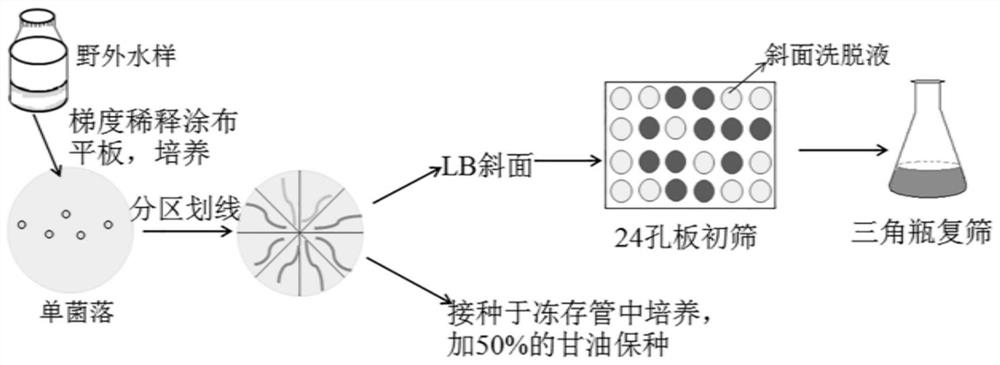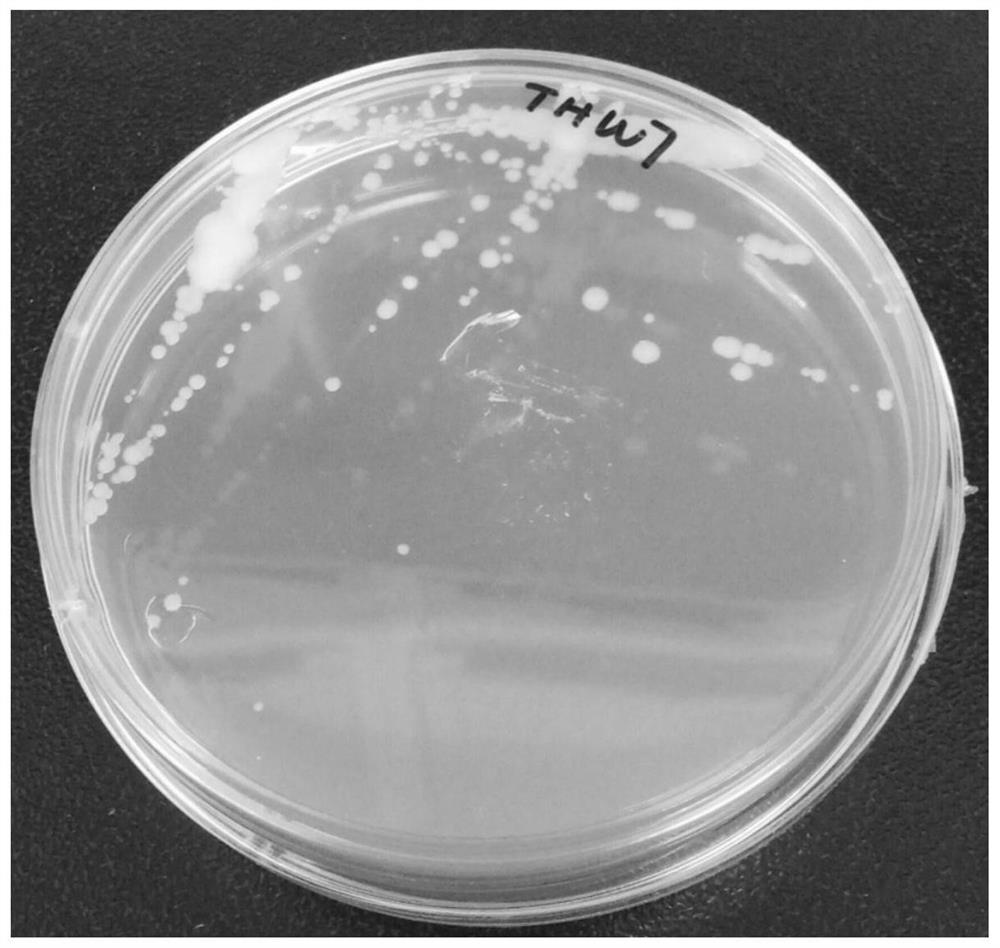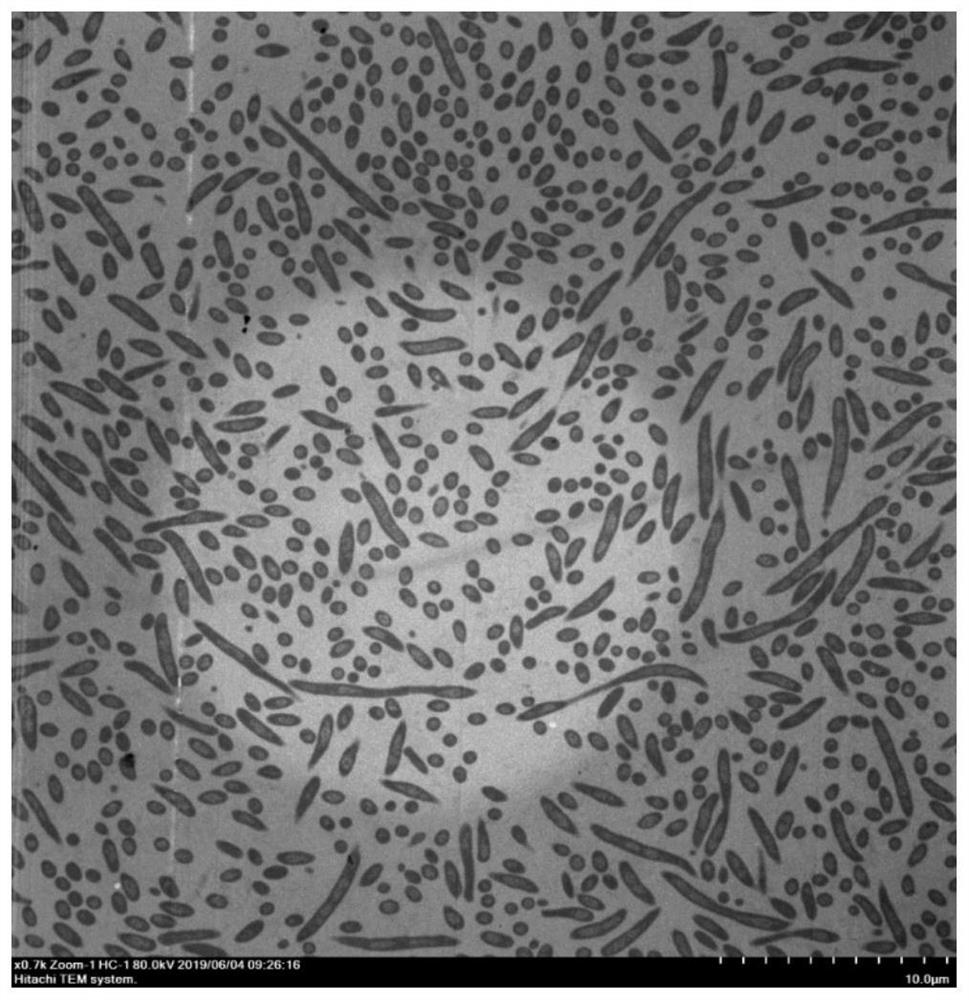Pseudomonas with algae-dissolving activity and its application
A kind of Pseudomonas, active technology, applied in the field of microbial algae control, can solve the problems in the initial stage, influence, few successful application cases, etc., achieve the effect of free retractable, long service life, and reduce additional nutrient load
- Summary
- Abstract
- Description
- Claims
- Application Information
AI Technical Summary
Problems solved by technology
Method used
Image
Examples
Embodiment 1
[0026] Example 1: Isolation, purification and cultivation of Pseudomonas sp. THW7
[0027] 1. Isolation, purification and preservation of Pseudomonas THW7
[0028] The separation and purification process of algae-lytic bacteria is as follows: figure 1 shown. Water samples of cyanobacteria blooms were collected from Taihu Lake, filtered through a 0.8 μm filter membrane (Millipore), and the supernatant was diluted 10 times with sterile water (the dilution level depends on the specific situation), and 100 μL of each gradient dilution was evenly coated Distribute on LB solid plates, each gradient has three parallels, write the corresponding number, and incubate upside down in a biochemical incubator at 30°C for 48 hours. Select a plate with a relatively uniform distribution of colonies, pick single colonies of different forms on the LB solid plate, separate and purify twice, and obtain purely cultured strains, which are stored in a -80°C refrigerator with glycerol preservation. ...
Embodiment 2
[0040] Embodiment 2: the application of Pseudomonas THW7 in controlling cyanobacteria bloom
[0041] Take the logarithmic period (20h, OD 600nm =1.8) at room temperature for centrifugation (5000rpm, 6min), collect the bacteria, wash 2-3 times with sterile water to wash away the LB medium on the surface of the bacteria. The obtained bacteria are resuspended by adding sterile water (as small a volume as possible) to obtain a bacterial suspension for future use.
[0042] Add the supersuspension of bacteria into the sterilized sodium alginate solution with a mass concentration of 3%, stir and mix with a clean glass rod, and inject the mixture dropwise into calcium chloride with a mass concentration of 4% with a syringe solution, cross-linked for 30min. Wash the embedding pellets with sterile water for 3-5 times to wash away the calcium chloride solution on the surface, and prepare bacterial cell embedding pellets with a diameter of about 4-6 mm for later use, such as Figure 6 ...
PUM
 Login to View More
Login to View More Abstract
Description
Claims
Application Information
 Login to View More
Login to View More - R&D
- Intellectual Property
- Life Sciences
- Materials
- Tech Scout
- Unparalleled Data Quality
- Higher Quality Content
- 60% Fewer Hallucinations
Browse by: Latest US Patents, China's latest patents, Technical Efficacy Thesaurus, Application Domain, Technology Topic, Popular Technical Reports.
© 2025 PatSnap. All rights reserved.Legal|Privacy policy|Modern Slavery Act Transparency Statement|Sitemap|About US| Contact US: help@patsnap.com



